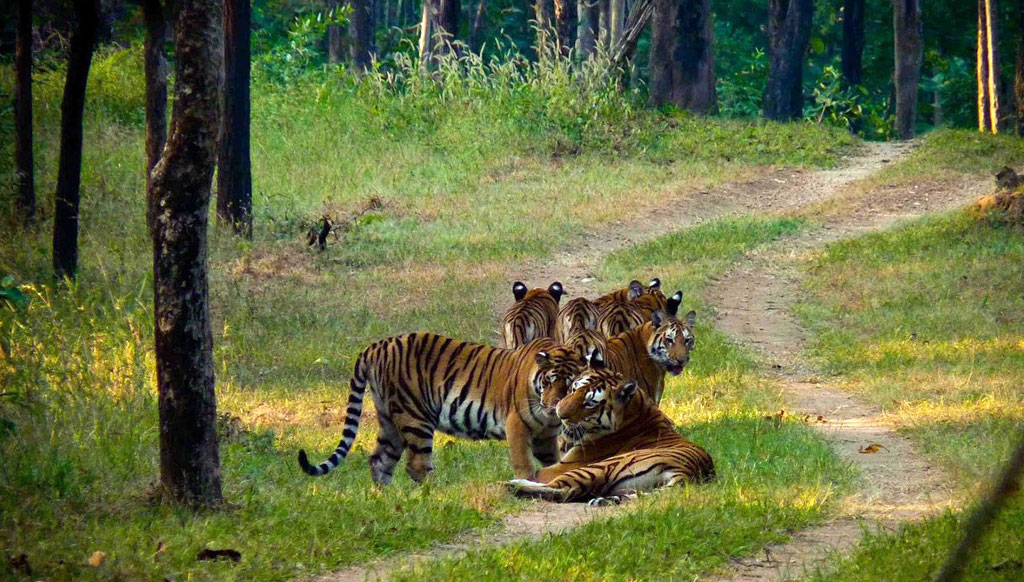Collarwali with her ‘famous five’ sub adult cubs in 2012. Copyright Karun Verma
I knew the tigress Collarwali or ‘Mataram’, ‘Respected Mother’ in Hindi, who died 2 days ago. She is a legend in the Pench Tiger Reserve, a wildland that straddles the Madhya Pradesh and Maharashta borders of India. This is not just because she was a great matriarch who lived in the core of the park, where nature tourism was allowed, and where she was comfortable around the many excited visitors and their vehicles in her guarded territory. This was not just because she was happy to show her extraordinary 8 litters, 29 boisterous cubs, to all who found her, including her ‘famous five’ cubs she nurtured to adulthood. This was not simply because so many of her cubs survived to adulthood that she repopulated a denuded landscape with her offspring. This was not only because a BBC film was made of her, countless articles written and scientists studied her every move. It was more than that.
It was because over the last 16 years of her life, she has created a viable, expanding and intact wilderness in which she and her family could survive and prosper. She literally saved her wilderness.
How did she do this, almost single handedly? Simple. Nature based economics.
Pench was a forgotten park in 2000 – it had been an artillery practice range in the Second World War and had been stripped bare of commercial wood decades before. Then poaching and extraction were rife, guards poorly paid and respected scientists were surprised that such a large herbivore population failed to sustain tigers. Then one naturalist and brave entrepreneur who loved the park, set up a small lodge in early 2004. Most people thought he was mad. Why here, when better parks were nearby that you could see tigers in? ‘Visitors and tigers will come’ he said. He was right.
The small Turia village besides the park entrance slowly began to see the benefits and the jobs created. The visitors began to come, the park attracted more interest from media and politicians. There was money to be made after all. Soon many visitors, more jobs, more lodges, and other bordering villages began to see the benefits of this new nature based economy. The park director’s job became more important and his staff now saw the benefits of increasingly park fee revenues. The local park guides from the bordering villages now stopped being the victims of conservation and became some of the beneficiaries, encouraging support for the park and its precious wildlife once again. Bollywood celebrities, politicians and even prime ministers started visiting to see what the fuss was about. Pench had gone from unknown, unloved and uncared for, to known, cherished and better funded – in a single decade.
For my small part, I found a 10,000 acre neglected patch of forest adjoining Pench in 2009 called Rukkad and Kurai, and asked to set up a community based conservancy here, to expand the park size by a third. Here was a perfect opportunity to expand the present park and protect critical and contiguous forest landscape to an adjoining park; the better known Kanha Tiger reserve. My proposal was agreed by the Madhya Pradesh government at the time, but rejected by the federal government sadly in April 2010. Today I am delighted this forest is now part and parcel of Pench Tiger Reserve and many of Collarwali’s offspring have benefited from this restored and protected patch of forest in the last decade.
In 2010, my charity TOFTigers had calculated and published that a single tigress in Rajasthan was worth $110million over her lifetime to the local economy. Collarwali was probably worth the same to Madhya Pradesh.
Thank you and rest in peace Collarwali.

